Antimicrobial and anti-inflammatory activities of endophytic fungi Talaromyces wortmannii extracts against acne-inducing bacteria
- PMID: 24887557
- PMCID: PMC4041568
- DOI: 10.1371/journal.pone.0097929
Antimicrobial and anti-inflammatory activities of endophytic fungi Talaromyces wortmannii extracts against acne-inducing bacteria
Abstract
Acne vulgaris is the most common skin disease, causing significant psychosocial problems such as anxiety and depression similar to a chronic illness for those afflicted. Currently, obtainable agents for acne treatment have limited use. Thus, development of novel agents to treat this disease is a high medical need. The anaerobic bacterium Propionibacterium acnes has been implicated in the inflammatory phase of acne vulgaris by activating pro-inflammatory mediators such as the interleukin-8 (IL-8) via the NF-κB and MAPK pathways. Talaromyces wortmannii is an endophytic fungus, which is known to produce high bioactive natural compounds. We hypothesize that compound C but also the crude extract from T. wortmannii may possess both antibacterial activity especially against P. acnes and also anti-inflammatory properties by inhibiting TNF-α-induced ICAM-1 expression and P. acnes-induced IL-8 release. Treatment of keratinocytes (HaCaT) with P. acnes significantly increased NF-κB and activator protein-1 (AP-1) activation, as well as IL-8 release. Compound C inhibited P. acnes-mediated activation of NF-κB and AP-1 by inhibiting IκB degradation and the phosphorylation of ERK and JNK MAP kinases, and IL-8 release in a dose-dependent manner. Based on these results, compound C has effective antimicrobial activity against P. acnes and anti-inflammatory activity, and we suggest that this substance or the crude extract are alternative treatments for antibiotic/anti-inflammatory therapy for acne vulgaris.
Conflict of interest statement
Figures
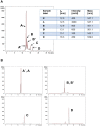
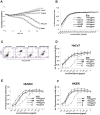
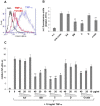
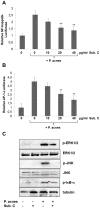
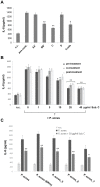
References
-
- White GM (1998) Recent findings in the epidemiologic evidence, classification, and subtypes of acne vulgaris. J Am Acad Dermatol 39: S34–7. - PubMed
-
- Zouboulis CC, Eady A, Philpott M, Goldsmith LA, Orfanos C, et al. (2005) What is the pathogenesis of acne? Exp Dermatol 14(2): 143–52. - PubMed
-
- Thiboutot D, Gollnick H, Bettoli V, Dréno B, Kang S, et al.. (2009) New insights into the management of acne: an update from the Global Alliance to Improve Outcomes in Acne group. Global Alliance to Improve Outcomes in Acne. J Am Acad Dermatol 60 (5 Suppl): :S1–50 - PubMed
-
- Koreck A, Pivarcsi A, Dobozy A, Kemény L (2003) The role of innate immunity in the pathogenesis of acne. Dermatology 206(2): 96–105. - PubMed
-
- Thiboutot D (2004) Regulation of human sebaceous glands. J Invest Dermatol 123(1): 1–12. - PubMed
Publication types
MeSH terms
Substances
LinkOut - more resources
Full Text Sources
Other Literature Sources
Medical
Research Materials
Miscellaneous

